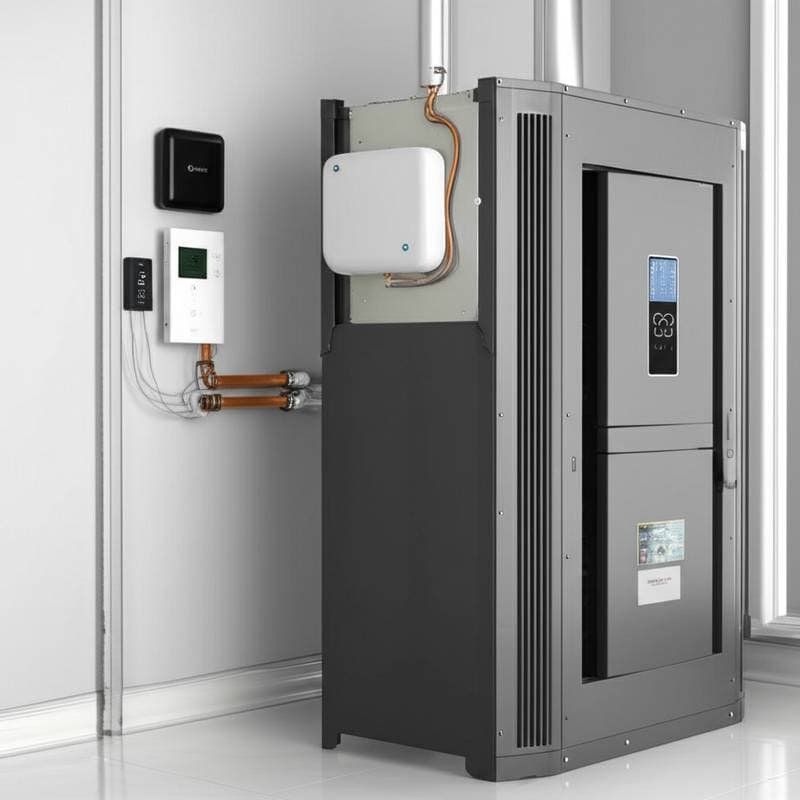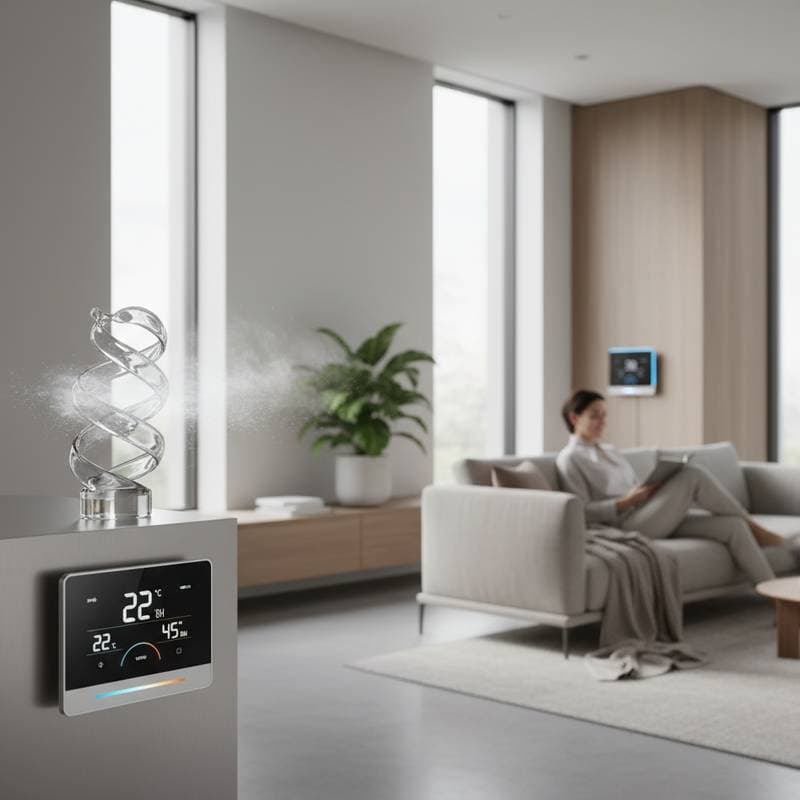Why Humidity Control Leads 2025 HVAC Innovations
Homeowners frequently encounter a common frustration: air that feels cool from the thermostat yet remains uncomfortably sticky. This sensation arises when humidity levels disrupt overall comfort, even as temperatures align. Precise humidity management addresses this gap, emerging as the dominant trend in 2025 HVAC advancements.
Understanding the Impact of Uncontrolled Humidity
In many regions, indoor humidity exceeds 60 percent during summer, fostering conditions for dust mites, mold, and unpleasant odors. Such excess moisture warps wooden floors, causes paint to blister, and accelerates wear on HVAC components. Homeowners often overlook these effects, which extend beyond discomfort to influence energy use and structural integrity.
Excess humidity forces air conditioners to operate longer, increasing cooling expenses by 10 to 20 percent. In contrast, overly dry winter air irritates respiratory systems and cracks fine furnishings. Achieving equilibrium in moisture levels enhances efficiency and preserves home elements.
Advances in HVAC Technology for Moisture Management
Leading manufacturers now prioritize integrated solutions for humidity regulation. Systems feature variable speed compressors that modulate performance to extract moisture effectively without excessive energy draw. Smart sensors monitor conditions continuously, enabling proactive adjustments.
HVAC specialist Carla Jennings observes, "We used to think cooling the air was enough. Now, we realize that proper humidity management defines true comfort." This perspective fuels innovations like dedicated whole-home dehumidifiers and coordinated ventilation systems, ensuring uniform air quality throughout living spaces.
Recommended Solutions for Effective Humidity Regulation
For those planning system enhancements, consider these targeted strategies to manage indoor moisture:
-
Integrate a whole-home dehumidifier: This component connects to the central HVAC setup, removing surplus moisture at the source. Installation expenses range from $1,200 to $2,500, with rapid return through efficiency gains.
-
Select variable speed units: Air handlers and compressors that vary output facilitate extended, low-intensity cycles, optimizing dehumidification while minimizing power surges.
-
Incorporate humidity-sensing thermostats: These tools provide real-time monitoring and automate responses to maintain optimal levels.
-
Address duct sealing and airflow optimization: Sealed ducts prevent infiltration of humid exterior air from areas like attics or basements, promoting even distribution.
-
Implement energy recovery ventilators: ERVs facilitate air exchange, retaining beneficial humidity and temperature balances from incoming fresh air.
Benefits of Integrated Humidity Control
Beyond immediate comfort, humidity regulation safeguards building materials, elevates air purity, and eases HVAC workload. Balanced conditions allow thermostat reductions without sacrificing satisfaction, yielding 5 to 10 percent savings in energy consumption.
Health improvements follow as well. Environments with humidity at 40 to 50 percent discourage mold proliferation and mite activity, reducing allergy triggers and asthma exacerbations.
Key Factors in System Upgrades
Prior to upgrades, assess insulation quality, air barrier effectiveness, and current HVAC capabilities. Engage a professional for a detailed humidity evaluation to pinpoint infiltration points. This step aligns new installations with specific home demands and regional weather variations.
Most whole-home integrations complete in under a day, though ERVs might necessitate duct adjustments. Initial investments prove worthwhile through sustained savings and enhanced livability.
Achieving Balanced Indoor Environments Year-Round
Humidity-focused HVAC systems advance toward comprehensive comfort solutions. They harmonize temperature and moisture, fostering healthier spaces that endure and operate efficiently.
Consult certified professionals via trusted networks for personalized assessments and installations. This approach secures optimal performance and longevity for your home's air management.
Frequently Asked Questions
Q: What constitutes the optimal indoor humidity range for health and material preservation?
A: Professionals advise 40 to 50 percent relative humidity to inhibit mold, safeguard structures, and promote breathing ease.



